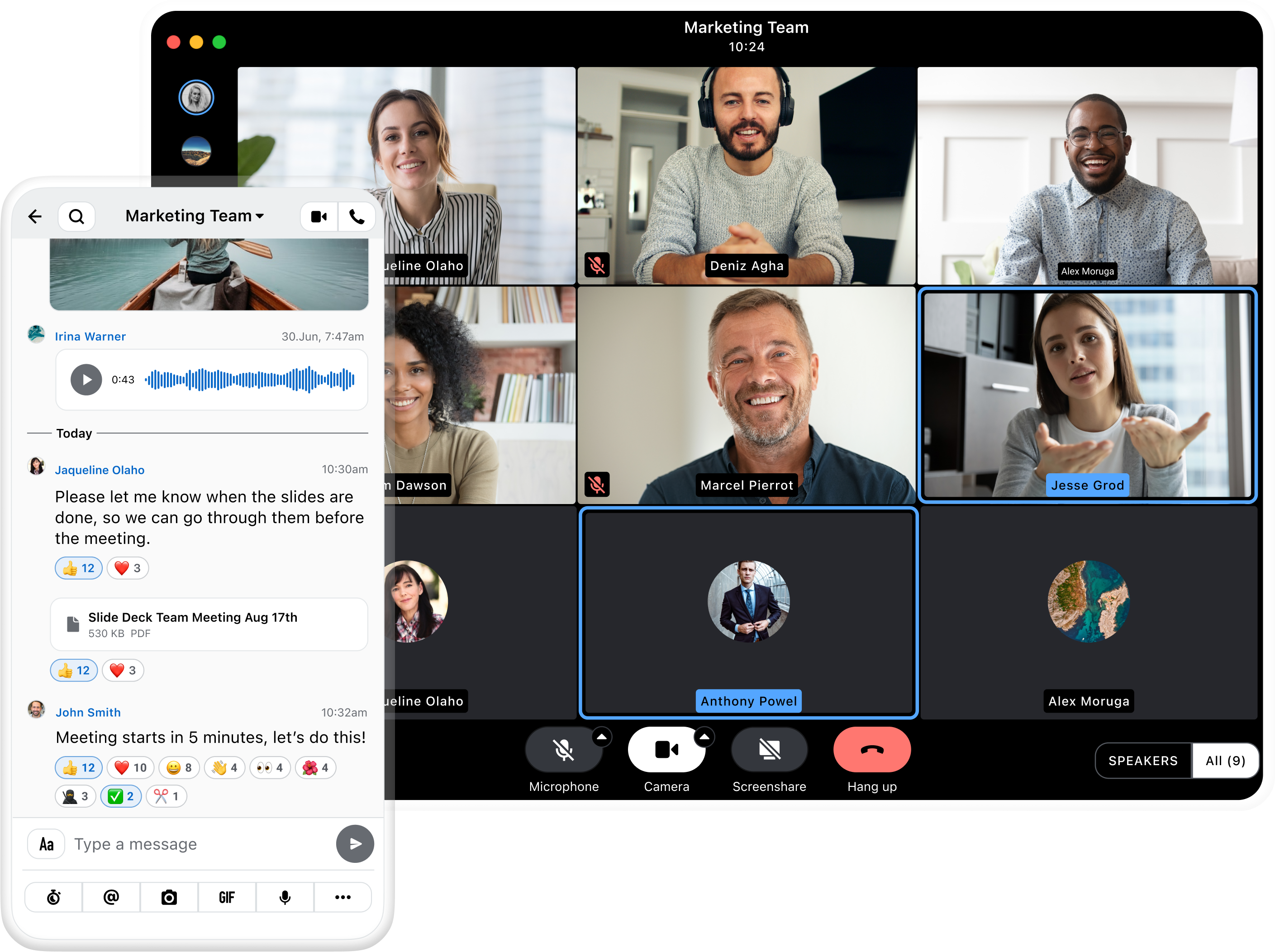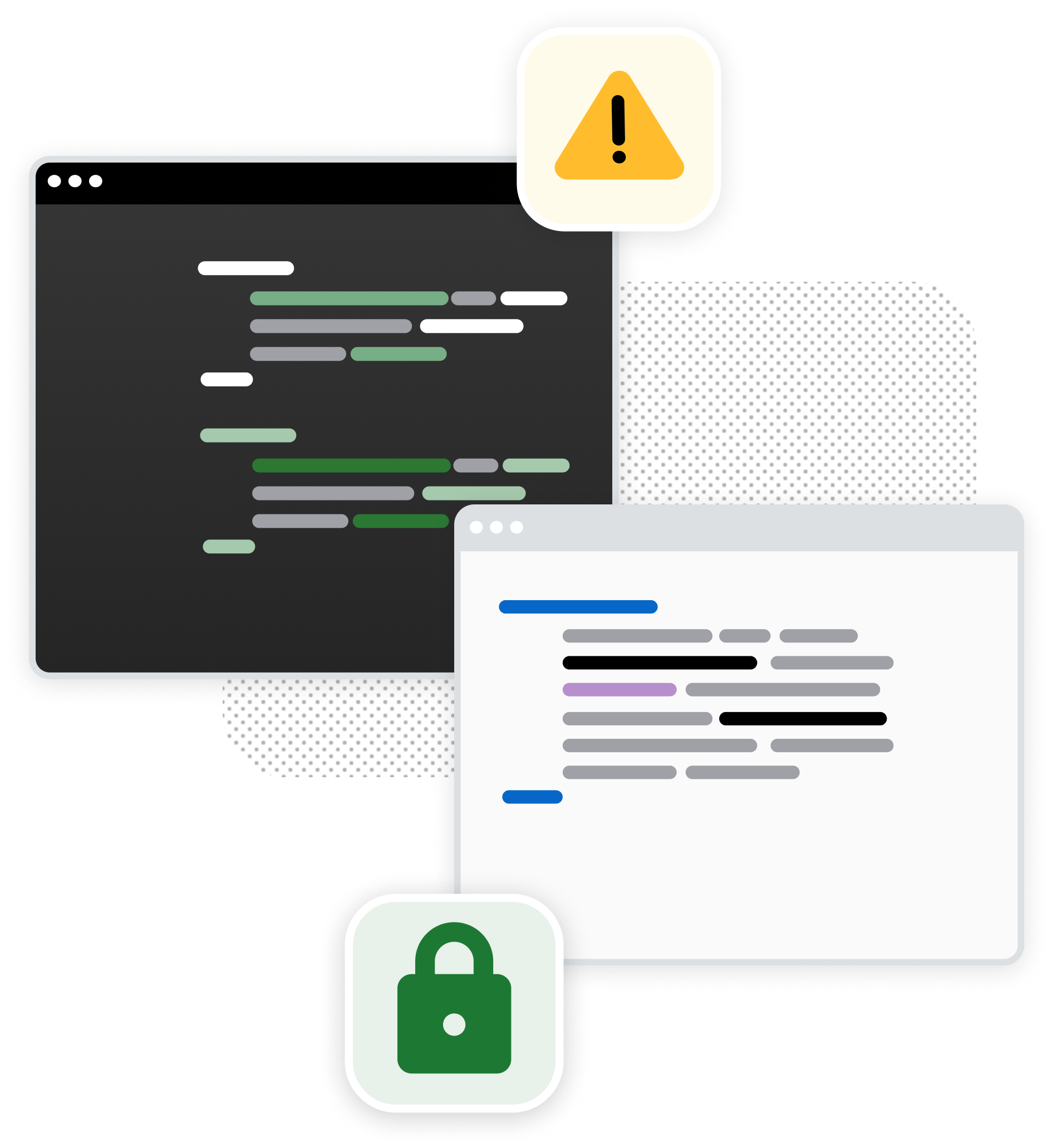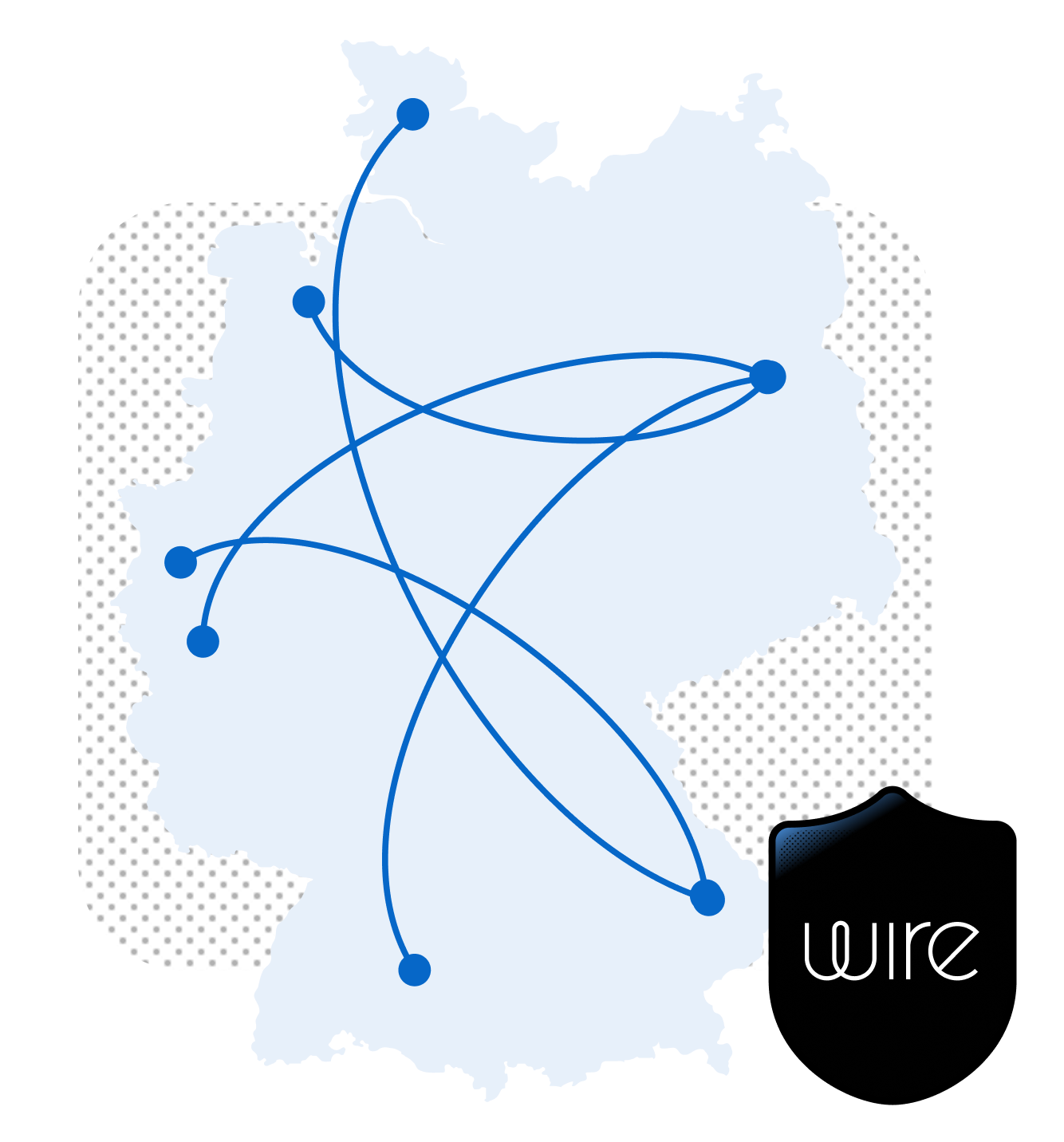Element vs. Wire
Compare Element and Wire on what matters most: security, usability, and compliance. From default encryption to ease of use and enterprise readiness, find out which platform best fits your team’s secure communication needs.

Wire vs. Element: Feature Comparison
| Feature | Wire | Element |
| Security & Privacy |
||
| Protocol Implementation | MLS | Double Ratchet (Olm/Megolm) |
| End-to-End Encryption by Default | ||
| Local Encryption Key Storage | Stored in server | |
| Encryption-At-Rest | ||
| Post-Compromise Security | Weak | |
| Perfect Forward Secrecy | ||
| Visible Cross-Signed Device Verification | ||
| Fleet Device Verification | ||
| Full Zero Knowledge | ||
| Zero Trust Architecture | ||
| Core Messaging | ||
| 1:1 Messaging | ||
| Private Groups | ||
| E2EE Public and Private Channels by Default | ||
| E2EE History Sharing | Coming soon | Limited |
| Screen Sharing | Poor functionality | |
| E2EE File Sharing by Default | ||
| Text Formatting | ||
| Notification Settings | ||
| Account Personalization | ||
| Availability Status | ||
| Read Receipts | ||
| GIFs | ||
| Chat History Backup & Recovery | ||
| Cross Platform Backups | Coming soon | |
| Send Audio Messages | ||
| Pin Conversations | ||
| Mark Message as New | ||
| Native Self-Deleting Messages | Limited | |
| Conversation Reactions (Emojis) | ||
| Conversation Search | Available in groups | Opt-in |
| Global User Search (Public Cloud) | Partial spam protection | |
| Archive or Organizing Conversations | ||
| E2EE 1:1 Audio or Video Calling by Default | ||
| E2EE Large Group Conference Calling by Default | ||
| WebRTC Simulcast | ||
| Guest Access without Sign-Up | ||
| Guest Links with Passwords | ||
| Integration & Ecosystem | ||
| Public Cloud | ||
| Private Cloud | ||
| On-Premises | Assistance required | |
| Customizations, SLAs available | Assistance required | |
| Deploy Third Party Integrated Apps (Bots) | ||
| Federation Scale and Flexibility | ||
| Secure Federation | ||
| Management | ||
| User Roles & Permissions | Basic controls | |
| Single Sign-On (SSO) | ||
| SSO Supports Complex IT Environments | Complicated | |
| Automated User Management (SCIM) | Partial | |
| Create Guest Rooms | Limited controls | |
| App Lock | ||
| Add/Manage Your Devices | Limited controls | |
| Restrict File Sharing | Limited controls | |
| Restrict Guest Links | Via 3rd party | |
| Additional Feature Configuration | Limited | |
| Team and Workspace Management | ||
The competitive data presented on this page was collected as of June 2025, based on information available at matrix.org/docs and element.io. This information may change or be updated without prior notice. Wire does not guarantee the completeness or accuracy of the information provided.
Wire vs. Element, Which One Is Better?
Element is built on the open Matrix protocol and offers flexibility and federation. However, its security depends heavily on how it’s deployed and configured. E2EE isn’t always on by default, and decentralized setups may require significant technical expertise to manage securely.
Wire, on the other hand, is built for teams that need security and simplicity without compromise:
- End-to-end encryption by default, always on, with no admin override.
- Various deployment options to fit your needs: public cloud, private cloud, or on-premises.
- Built on a zero-trust and zero-knowledge framework.
If reliable privacy, strong encryption, and low operational overhead matter to your business, Wire offers protection and simplicity where Element requires trade-offs.


Fully Open-Source Security for Verified Collaboration
Wire is one of the few secure collaboration platforms that is fully open source, from protocol to application. This means no black boxes, no hidden logic, no key escrow, and full auditability. With Wire, you get transparent, peer-reviewed cryptography plus the highest industry certifications:
- ISO 27001
- ISO 27701
- FedRAMP
- FIPS 140-2
- NIST 800-17
Built to Meet Enterprise Demands.
MLS Protocol
Ensure secure, scalable communication for large teams with the latest IETF standard, perfect for regulated industries and high-trust environments.
E2EE by Default
Messages, files, and calls are fully E2EE by default, no setup required. Only you and your designated recipients can access the messages.
SSO & SCIM
Easily manage identities and access control at scale with seamless Single Sign-On and automated provisioning via SCIM for simplified log-in.
ID Shield
Protect your team with added layers of verification, ensuring only the right people gain access to sensitive environments.
Conferencing
Host secure voice and video calls with up to 200 participants. Every session is encrypted end-to-end and secured using MLS.
Guest Management
Invite external collaborators with custom permissions. Maintain full control while enabling secure, temporary participation in shared spaces.
Secure Federation
Collaborate across organizational boundaries with different security clearances without compromising on security and privacy.
Flexible Deployment
Deploy on your terms, whether in the private cloud, public cloud, or on-premises. Maintain compliance and retain full control over infrastructure.
Element Alternative FAQ
Is Element secure and encrypted?
Element can be secure, but only if it’s configured correctly. While it supports E2EE, it’s not always enabled by default, and key management is left to the user or organization. In decentralized setups, security depends heavily on server configuration, which introduces risk if not managed properly. Without expert oversight, Element’s encryption may fall short of enterprise-grade protection.
Is Element HIPAA and GDPR compliant?
Element can support GDPR and HIPAA compliance, but this depends on how it is hosted and configured. Self-hosted servers require organizations to implement their own data protection policies, encryption key management, and compliance controls.
Is Element free to use?
Element is free and open-source. You can use the public Matrix server (matrix.org) or self-host your own. Paid enterprise offerings are also available through Element Enterprise for additional support, hosting, and compliance.
Is Element easy to use for non-technical teams?
Not really. Element offers advanced features through the Matrix protocol, but it often requires manual setup, including encryption configuration, server management, and user verification. This makes it better suited for organizations with dedicated IT resources.
In contrast, Wire is designed for ease of use from day one, with E2EE enabled by default, fully managed deployments, and a clean, intuitive interface. No technical expertise needed, making it ideal for teams that need secure collaboration without the operational burden.
What are the main differences between Element and Wire?
Element is decentralized, open-source, and flexible, but requires more technical management.
Wire is fully managed, offers default E2EE, zero-trust architecture, and compliance-focused deployment without the need for complex setup.
If your organization needs simplicity, guaranteed security, and turnkey compliance, Wire is the safer choice.
See Wire in action
Discover how Wire enables secure, compliant, and seamless collaboration for your team - without compromising usability or control.